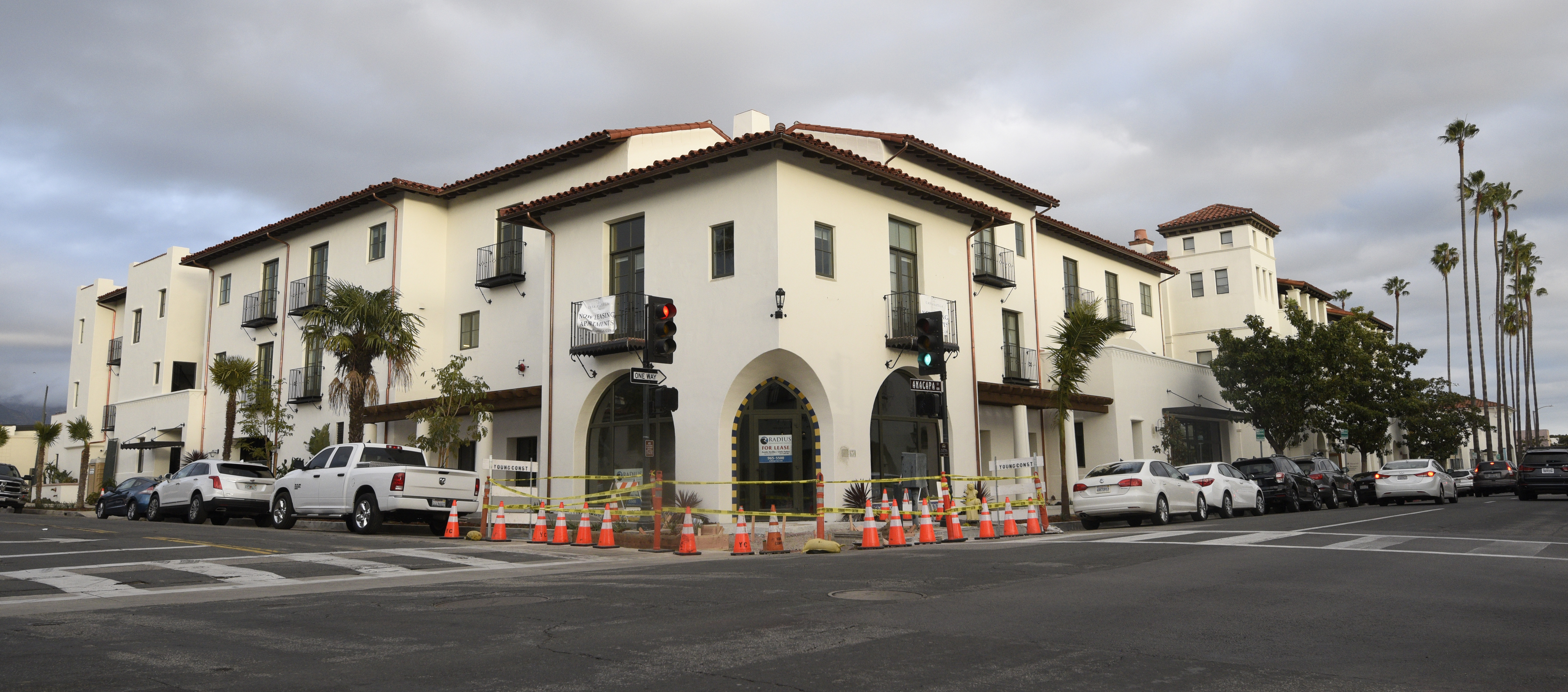New Luxury Units Not ‘Workforce Housing,’ Says Sneddon
Santa Barbara City Councilmember Calls Out New Anacapa Street Apartment Building

Housing costs have grown so astronomical throughout the South Coast that new luxury apartments in downtown Santa Barbara — going for as much as $5,250 a month for a two-bedroom unit — now fall within the definition of “workforce housing” for purposes of securing City Hall bonus density incentives designed to promote the creation of new rental units. That’s the case for the brand-new Casa Anatega building, located at the architecturally sensitive intersection of Anacapa and Ortega streets.
The new building, developed by Michael Rosenfeld and Austin Herlihy, offers 30 units of rental housing on top of a ground floor of still-to-be-determined retail or commercial space. Designed by architect Brian Cearnal, the building offers thick white stucco walls with enough Moroccan tile work, customized wrought-iron fixtures, and panoramic window views of the Riviera to qualify as Architectural Digest’s playmate of the month. The roof is covered with low-lying succulents designed to capture rain and funnel it through customized copper spouts into Moorishly tiled planter boxes nearly five feet high.
While the architecture will win both praise and awards, the rental rates are starting to induce heartburn even though tenants don’t start moving in until February 1. “This is another example of how the AUD [Average Unit-size Density] program is not meeting the intended purpose of creating workforce housing,” stated Councilmember Kristen Sneddon. “We need meaningful housing. We need it to be addressing the needs of the missing middle, not giving away limited space to incentivize luxury units.”
The AUD program to which Sneddon alluded is the controversial effort launched by City Hall to spur the construction of new rental housing by reducing parking requirements and allowing greater densities than zoning would otherwise allow. Without availing themselves of the program’s benefits, developers of Casa Anatega could have built only 13 units and would have had to build two parking spaces for every unit, as opposed to just one.
When the program was launched, city councilmembers were targeting middle- and upper-middle-income households: those making $63,000-$158,000 a year. But even tenants occupying the upper tier of these brackets would find themselves priced out of reach by the listing price of Casa Anatega’s two-bedroom units. Those in the so-called missing middle could not afford the studios or one-bedroom units.
Herlihy stressed that his units will, in fact, qualify as workforce housing for the new wave of highly paid high-tech workers moving to Santa Barbara. Amazon, it’s reported, will employ as many as 350 engineers in its new downtown digs, also developed by Rosenfeld and designed by Cearnal. The new units, Herlihy stated, will not exceed their budgets and will allow a new cadre of hip, young workers to walk to their jobs, spreading their wealth as they go.
Critics of the AUD program contend too many of the new “workforce” units are too expensive. Supporters insist just as vehemently that the new rental units — no matter how pricey — help rectify the crushing imbalance between supply and demand and will eventually help cool off housing prices. City planners, however, have collected no data to support either viewpoint. To date, the AUD program has resulted in the production of 250 new housing units, but few of the new developments have yet turned in surveys of their tenants — who they are, where they come from, how old they are, and how much they pay — as the program calls for.



